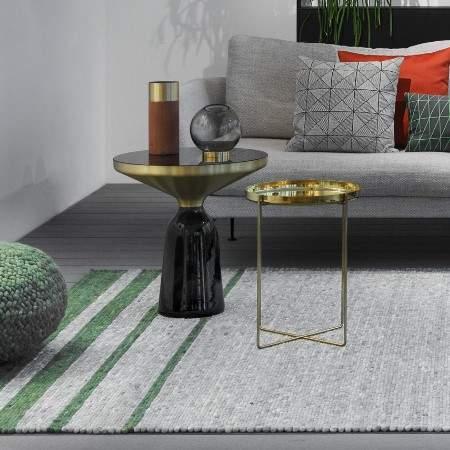Local Storage seems to be disabled in your browser.
For the best experience on our site, be sure to turn on Local Storage in your browser.
Persian Rugs FAQ
How to clean a Persian rug
Like every other type of rug, Persian rugs also get stained and dirty over time. Although Persian rugs require a professional clean every year, cleaning the grime and minor stains can help maintain the rug’s pristine condition for extended periods of time. There are several different ways you can clean a Persian rug, including:
- Vacuum: Lay the rug on a hard surface and slowly vacuum it to remove any excess pet hair, dirt, and abrasives. Repeat this step at least thrice.
- Sweep it: It’s advisable to gently sweep the rug from one side to the other, preferably with a broom that has straw bristles. Make sure you don’t move the broom back and forth as it might damage the rug.
- Shake the dust out: Simply take the rug out and shake it to get rid of the dirt. You can ask someone for help if the rug is too heavy or big.
- Deep clean: Spray both ends of your rug with cold water. Then, use a non-shedding sponge or a long-haired soft brush to lightly rinse the rug with a rug shampoo or a cleaning solution.
- Use professional help: It’s advisable to get your rug professionally cleaned at least once a year. They usually use deep, steam, or dry cleaning to clean and restore your rug.
Why are Persian rugs so expensive?
In the carpeting world, Persian rugs stand out from all the rest. There are numerous reasons why they are so expensive, such as:
- Artistic value: Over time, Persian rugs have transformed into a kind of art that perfectly showcases Persian history and culture. Authentic Persian rugs are completely hand-crafted, so every piece is a masterpiece in its own right, made by artists who use traditional scenes and motifs to reflect their own culture.
- Complex structure and design: Persian rugs are designed with countless tiny knots that are all made by hand. The designs and images on the rugs are created by placing the knots in different colored threads and in distinct patterns. Most rugs feature curved designs, which are much more difficult to perfect than plain geometric patterns.
- High-quality materials: Persian rugs are usually designed with natural animal or plant fibers, such as wool, jute, sisal, silk, and cotton. These fibers don’t fade as quickly as synthetic fibers, last much longer, are easier to clean, and improve the air quality of the room.
What is a Persian rug?
A Persian rug is basically a hand-knotted carpet that’s produced in Iran or modern-day Persia. Since Iran is popular for creating intricate rugs with incredibly high knot counts, Persian rugs are usually considered to be high in quality. All Iranian artists are extremely proficient in their craft, so they’re able to create beautifully detailed rugs with extraordinary precision.
Nowadays, traditional hand-woven rugs are increasingly sought after. Due to the huge amount of manual work needed in their production and the high artistic value of their complex designs, Persian rugs are typically sold at incredibly high prices. Therefore, these rugs have retained their ancient status as a thing of beauty, art, and luxury.
How to identify a Persian rug
Persian rugs are incredibly versatile in design, ranging from nomadic tribal pieces to curvilinear floral patterns. While every hand-knotted Persian rug is a unique piece that reflects different traditions, there are some ways you can identify a Persian rug:
- Pay attention to the method used to make the fabric. A true Persian rug will only be hand-knotted.
- Thoroughly check the design as Persian knots are asymmetrical and open to only one side. They do not leave any gaps and are less bulky compared to Turkish knots, resulting in a much more complex design and a lush pile.
- Persian rugs are only made of silk and wool. Some artisans use natural silk from silk caterpillars to design rugs, while some use bamboo silk.
- Test the rug’s color as authentic Persian rugs are only made with colorfast dyes. This means that the different colors on the rug will not bleed out.
- Look for any pattern markings on the backside as only original Persian rugs have them.
How to tell if a Persian rug is authentic
A Persian rug is a timeless classic that enhances the warmth, beauty, and charm of every room. However, it’s important to know whether the rug is authentic or fake before you make your purchase. Here are some steps that can help you determine whether a Persian rug is authentic:
- Pay attention to the weave on the back of the rug and check whether the fringe is sewn on the rug or attached to it. If the rug is authentic, you’ll be able to see the foundation threads on the back.
- Authentic Persian rugs will have individual, hand-made knots on the back. However, the size of the knots might vary according to the rug’s origin.
- The design and pattern on the back of the rug should be similar to the pattern on the top. The backside of machine-made rugs will have a muddled and cloudier design, along with a hard plastic backing.
- Authentic rugs will never be completely symmetrical, and will always have a bit uneven shape. If you notice imperfections or irregularities, then the rug is authentic.
- Hand-knotted rugs are designed with natural materials, such as wool and cotton. Machine-made carpets are usually made with polyester or nylon.
Why are Persian rugs so famous?
A symbol of distinguished taste, the versatility in the function, color, and design of Persian rugs is what makes them so famous. Admired for their sumptuous colors, impeccable craftsmanship, and complex designs, the rugs have not only been accepted into interiors and households all over the world but have also found their way onto concert stages and catwalks, along with scores of artworks.
The primary purpose of a rug is to provide comfort. Their dense fibers remain warm, making them the perfect solution for cold floors. The fibers further trap all sound vibrations, thus preventing them from reverberating off hard floors and walls. However, Persian rugs take the cake when it comes to providing high-quality comfort without negatively affecting style.
Furthermore, no two Persian rugs are exactly the same. Some boast intricate borders and complex designs, while some resemble pictures that you can hang on the wall. Each rug is a genuine piece of art, with every piece having its own distinguishing features.
What makes a Persian rug valuable?
Owning a Persian rug is similar to owning an invaluable piece of history. Authentic rugs from Iran are sought after and adored by collectors worldwide.
Several different types of wool are used to make Persian rugs, and the type of wool affects its value. If the rug has a sheen that enhances with age, then the wool was sheared off a live animal. The oils and lanolin in the fibers extend the life of the carpet, making it softer and more valuable than other rugs.
The older a rug gets, the more valuable it becomes. In the past, some rug merchants wouldn’t sell a new carpet, and would instead wait several years, so the rug would bring in more money. However, washing the rug with chemicals negatively affects its value.
Rugs that are typical of the 19th-century Tabriz, Kashan, or Kerman styles, have little signs of wear, boast fully executed designs, and have fringe woven into them are one of the most valuable of Persian rugs.




